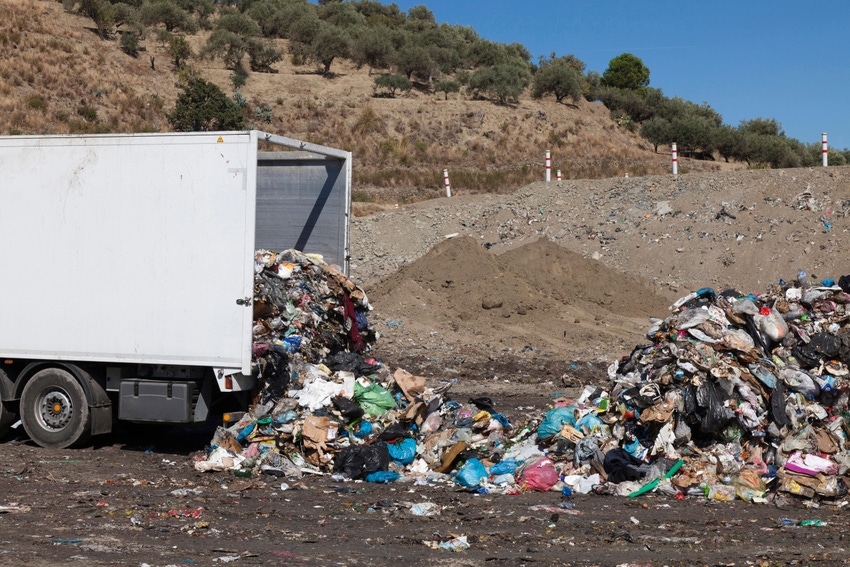Buckhorn Energy Disposal Services Heads to Court Following Landfill Traffic Complaints
Buckhorn Energy Disposal Services owns and operates a landfill situated north of the ranch. County Road 454 (CR 454) passes through the property, and landfill customers use CR 454 as one of three access routes to the landfill since its opening in 2013. The law requires an element of give-and-take between neighboring landowners and a degree of interference must be tolerated. Disputes between these parties end up in court because somebody believes that a deeply felt annoyance need not be endured.
December 7, 2023

The television series “Yellowstone” brings viewers drama aplenty at the sprawling Dutton family ranch in southwestern Montana. That fictional property is in running conflict with what it borders – an expanding town, an Indian reservation, and the first national park.
Some 350 miles from that locale, Dawson County sits in the easternmost part of the state, only about 20 miles from the western border of North Dakota. The total area of the county is 2,400 square miles, which is roughly the size of Delaware. (Montana itself is slightly larger than Germany.) With a population of approximately 9,000, according to the 2020 census, the county contains only 3.8 people for every square mile. For most residents, that’s some serious peace and quiet. Not so for those at the very real Diamond V Ranch.
Buckhorn Energy Disposal Services owns and operates a landfill situated north of the ranch. County Road 454 (CR 454) passes through the property, and landfill customers use CR 454 as one of three access routes to the landfill since its opening in 2013.
The law requires an element of give-and-take between neighboring landowners and a degree of interference must be tolerated. Disputes between these parties end up in court because somebody believes that a deeply felt annoyance need not be endured.
Diamond V Corporation and its individual shareholders (collectively referred to here as “Diamond V”) filed a lawsuit in the 7th Judicial District Court of Montana, alleging nuisance, breach of contract, and negligence by both Buckhorn and Dawson County and trespass by Buckhorn. Diamond V claimed the landfill caused loss of the use and enjoyment of their property and emotional distress due to increased traffic on CR 454 and the resulting noise, light and dust.
Buckhorn and the County both moved for summary judgment. District Judge Ashley Harada granted the motions, noting "the lack of empirical data, expert testimony, or investigation to substantiate [Diamond V's] claims, and the lack of testimony as to specific elements related to nuisance, negligence, trespass, and damages." After reviewing the parties’ legal arguments and the lower court record on appeal, the state supreme court concluded unanimously that Judge Harada had made the right decision.
Montana law defines “nuisance” as "[a]nything that is injurious to health, indecent or offensive to the senses, or an obstruction to the free use of property, so as to interfere with the comfortable use and enjoyment of life or property." However, where an activity is done or carried on with statutory authority – for example, a state-licensed solid waste facility – it cannot be deemed a nuisance unless a plaintiff can show that the defendant either (a) overstepped such authority or (b) negligently handled its privileges.
The parties did not dispute that the licensing and operation of the landfill and the maintenance and operation of CR 454 are statutorily authorized activities and that neither Buckhorn nor the County had exceeded their statutory authority. Thus, to prevail, Diamond V had to prove that the defendants breached a duty of care and that the plaintiffs were injured as a result. Part of that obligation was to establish “the degree of prudence, attention, and caution the defendants must exercise in fulfilling that duty of care."
In that regard, Buckhorn and the County argued Diamond V failed to establish a standard of care by which Buckhorn and the County's maintenance of the road is to be measured by the jury. Judge Harada concurred, stating:
All vehicles traveling on dirt roads will cause dirt to be raised from the roadbed. All
vehicles traveling on dirt roads using their headlights will cast their beams askance.
All vehicles traveling on dirt roads will create noise. It is the role of the expert to
identify, quantify, and assess these issues in order to establish whether a tort has
been committed. Diamond V has not done so in any manner.
On appeal, Diamond V asserted that the maintenance of the road is simple enough for a jury to understand without expert testimony. The justices disagreed. “[D]riving a dirt road does not make one an expert in road maintenance,” they wrote. “Assessing whether even one discrete task (e.g., dust control) was performed adequately requires examination of environmental and administrative factors such as the quantity and nature of traffic, effectiveness and practicability of maintenance measures, and road composition. * * * Diamond V failed to establish any negligence on the part of Buckhorn or the County. Buckhorn and the County were entitled to summary judgment on Diamond V's negligence and nuisance claims.”
Diamond V also argued that a jury question existed as to whether Buckhorn and the County breached their duties under their road maintenance agreement. In granting summary judgment on Diamond V's breach of contract claim, Judge Harada observed:
Diamond V's breach of contract claim . . . is not supported by any cognizable
information. Diamond V alleges that Buckhorn and the County breached their road
maintenance agreement but fails to identify any provision(s) that was violated or
when. Diamond V has not presented evidence to demonstrate what actions of the
County or Buckhorn have caused a breach of the terms of the contract.
Moreover, she noted that Diamond V is neither a party to the road maintenance agreement nor is it an expressly designated beneficiary of the agreement. The justices held that the lower court was correct in ruling that Diamond V did not have standing to sue for breach of the maintenance agreement. Standing is the right of a party to challenge the conduct of another party in court.
The law in Montana and elsewhere makes a distinction between an agreement between its original parties where performance may incidentally benefit a third party and an agreement made expressly for the benefit of a third party. In the former circumstances the third party, as a “stranger” to the contract, lacks standing to enforce it.
“Anyone can use a public road,” the justices noted. “A contract for the benefit of users of a public road and all the landowners along a public road effectively encompasses the general public. Diamond V's inclusion in this group does not make the contract expressly for Diamond V's benefit.”
Diamond V Corp., Inc. v. Buckhorn Energy Oaks Disposal Servs., LLC, et al., No. DA 22-0685, Supreme Court of Montana, Oct. 3, 2023.
About the Author(s)
You May Also Like




